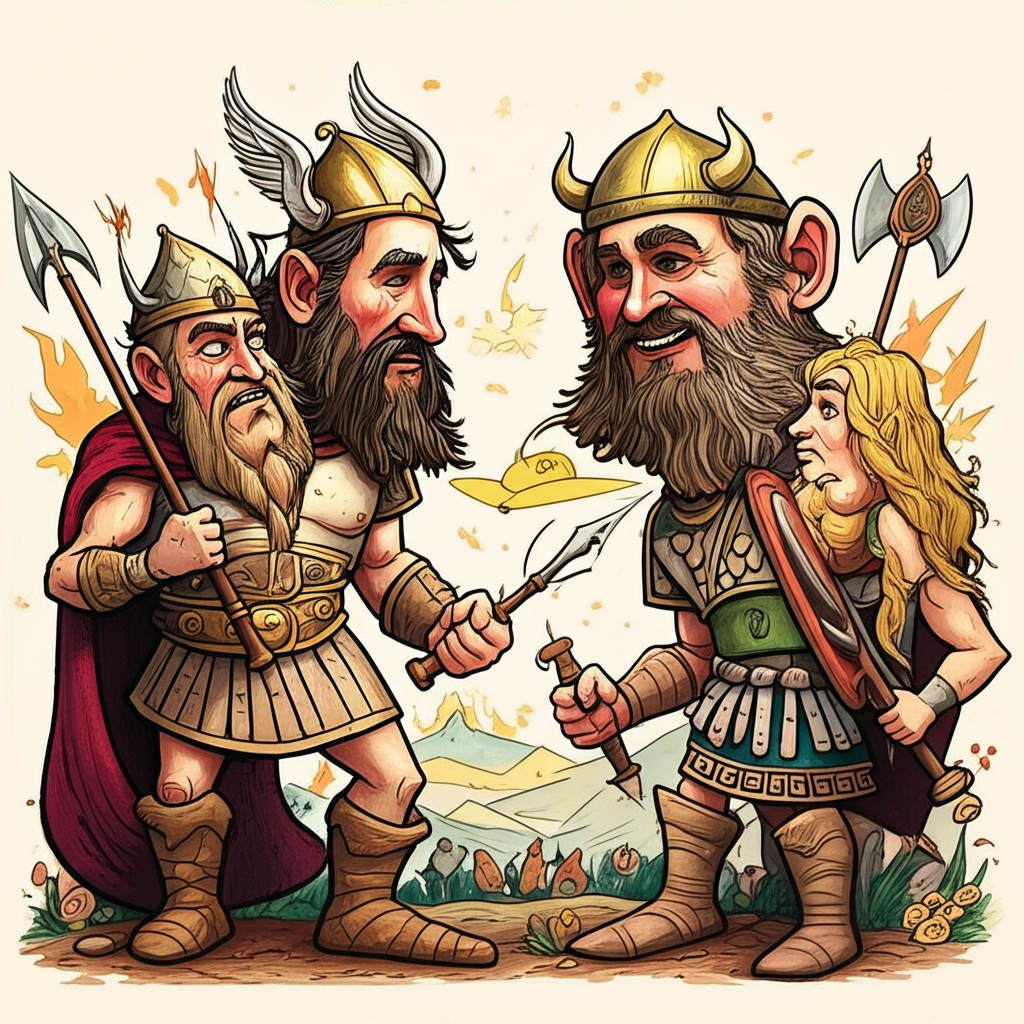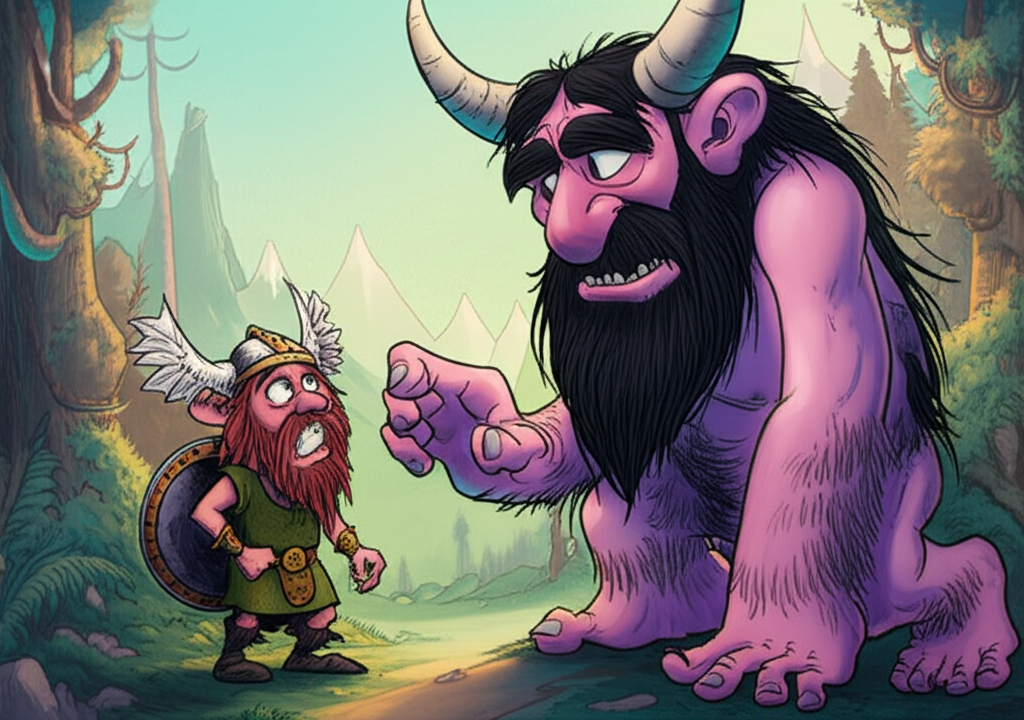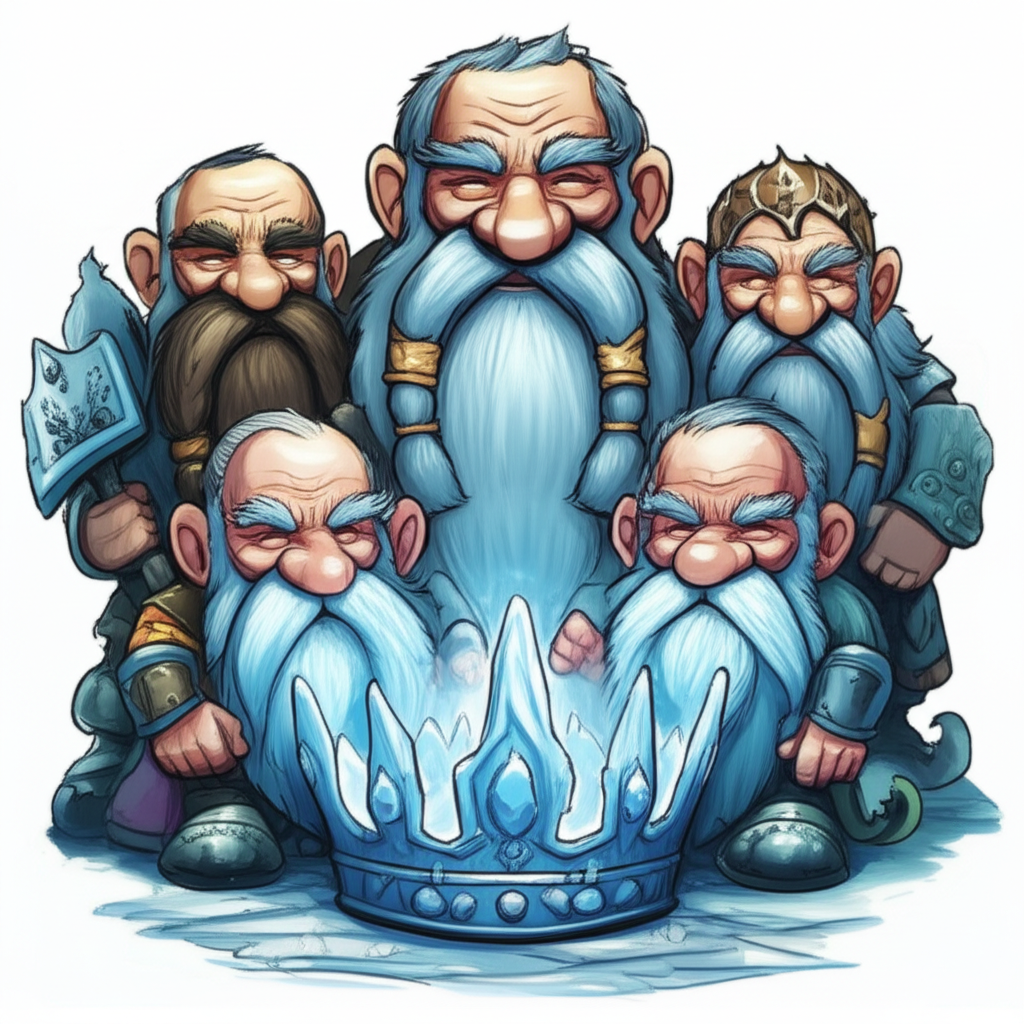
The tapestry of human civilization is richly woven with threads of myth and legend, stories passed down through generations that reflect the values, fears, and understandings of the ancient world. Among the most vibrant of these narratives are those originating from the Germanic peoples of Scandinavia – the Norse myths. These tales, found primarily in the Poetic Edda and Prose Edda, compiled in medieval Iceland, are not historical accounts but rather traditional stories told by ancient peoples, offering a glimpse into their profound imagination and unique cosmology. One such foundational myth, pivotal to understanding the Norse worldview, is the Aesir–Vanir War, a conflict that not only reshaped the divine hierarchy but also implicitly reinforced the distinct boundaries of the realms, including the vast and often perilous land of Jotunheim.
Origins and Cultural Background: A World Shaped by Myth
The myths of the Aesir and Vanir emerged from a culture deeply intertwined with its environment and societal structure. Predominantly shared during what is known as the Viking Age (roughly 8th to 11th centuries CE), these narratives resonated with seafaring, agricultural, and often martial societies. For these ancient Norse people, the world was not merely a physical space but a complex arrangement of Nine Realms, all interconnected by the cosmic ash tree, Yggdrasil. Their lives were dictated by the cycles of nature, the bounty of the land, and the ever-present threat of conflict, both human and elemental.
In this worldview, gods were not distant, untouchable entities but active participants in the cosmic drama, often mirroring human virtues and flaws. They believed in a world where order (represented by the gods) was in constant tension with chaos (often personified by the Jötnar, or giants). Creation itself was born from the clash of fire and ice, and destruction was an inevitable part of the cycle, culminating in the prophesied Ragnarök. Storytelling was central to their culture, serving not only as entertainment but also as a means of transmitting knowledge, reinforcing social norms, and making sense of an often-unpredictable world. These myths were an oral tradition, vibrant and fluid, before eventually being committed to parchment centuries later.
Character Descriptions: Architects of Realms and Chaos
To truly appreciate the Aesir–Vanir War, one must first understand its principal players. The Aesir were the primary pantheon, often associated with war, wisdom, kingship, and order. Figures like Odin, the Allfather, a god of magic, poetry, and battle; Thor, the mighty wielder of Mjölnir, protector of Asgard and Midgard; and Tyr, the brave god of justice and war, embodied strength, intellect, and leadership. Symbolically, the Aesir represented the structured, often martial, aspects of society and the divine drive to impose order upon the cosmos.
In contrast, the Vanir were an older, distinct group of deities, primarily associated with fertility, wealth, peace, and the bounties of nature. Njörðr, god of the sea and wealth; Freyr, god of virility, sunshine, and good harvest; and Freyja, goddess of love, beauty, war, and magic, were prominent among them. The Vanir symbolized the generative, life-giving forces of the world, reflecting the agricultural prosperity vital to Norse communities.
Then there were the Jötnar, often translated as ‘giants,’ but more accurately representing primordial beings, forces of nature, and the embodiment of chaos and wildness. They were not always monstrous in form; some were incredibly wise, others beautiful, but they consistently represented the untamed elements that stood in opposition or challenge to the ordered realms of gods and humans. Jotunheim, their realm, was conceptually the vast, wild, untamed wilderness at the edges of civilization, a place of immense power but also danger, embodying the raw, chaotic forces of the natural world that the gods sought to contain or control. They symbolized the primal, often destructive, aspects of existence that constantly threatened to overwhelm the fragile order established by the Aesir.
The Great Conflict: A War That Forged the World’s Order
The Aesir–Vanir War, as recounted in the ancient sagas, was not merely a border skirmish but a foundational conflict that reshaped the cosmic landscape. The catalyst for this unprecedented strife was the arrival of a mysterious figure named Gullveig (meaning "Gold-might" or "Gold-lust") in Asgard, the realm of the Aesir. Gullveig, often identified as an aspect of Freyja or a powerful Vanir sorceress, was depicted as insatiably greedy for gold, a trait she sought to spread among the Aesir, corrupting their values.
Alarmed by her unsettling influence and her potent seidr (magic), the Aesir attempted to purge her from their midst. Three times they burned her in Odin’s hall, and three times she was reborn, seemingly indestructible. Each time she emerged, she was known as Heiðr, meaning "Gleaming One" or "Bright One," a seeress who practiced dark magic. This repeated assault on Gullveig, seen as an affront to the Vanir’s sphere of influence and perhaps even a direct attack on one of their own, ignited their fury.
The Vanir, incensed by the Aesir’s treatment of Gullveig/Heiðr, demanded recompense. When the Aesir refused, war became inevitable. Odin, leader of the Aesir, cast his spear, Gungnir, over the Vanir host, symbolically initiating the conflict. The war that ensued was cataclysmic. Walls of Asgard crumbled, the lands were ravaged, and both sides suffered immense losses. The Aesir, skilled in battle, met the Vanir, who possessed formidable magical prowess. Neither side could gain a decisive advantage, leading to a prolonged and bloody stalemate.
Eventually, weary of the ceaseless destruction, both pantheons sought peace. A truce was declared, sealed by an exchange of hostages. The Vanir sent their most esteemed: Njörðr, the wealthy sea god, and his children, Freyr and Freyja, who brought with them their profound knowledge of fertility, prosperity, and magic. In return, the Aesir sent Hœnir, a swift-footed and handsome god, and Mímir, a wise being renowned for his counsel. This exchange not only ended the war but also led to the integration of the two pantheons, blending their powers and attributes into a more complete divine order.
In the aftermath of this great war, the Aesir sought to fortify Asgard, their stronghold. They engaged a skilled master builder, a giant often referred to as Hrimthurs, who offered to construct an impenetrable wall around Asgard in an impossibly short time. His payment demands, however, were audacious: the Sun, the Moon, and the hand of the goddess Freyja. With the aid of his magnificent horse, Svaðilfari, the giant worked with astonishing speed. It seemed he might complete the task within the agreed timeframe, much to the Aesir’s dismay.
It was Loki, the trickster god, who devised a plan to prevent the giant from fulfilling his end of the bargain. Transforming himself into a mare, Loki lured Svaðilfari away, delaying the giant’s work. When the giant realized he had been tricked and would not receive his payment, he revealed his true, monstrous nature. At that critical moment, Thor, who had been absent, returned to Asgard and, with a mighty swing of Mjölnir, slew the giant, thus preserving the Sun, the Moon, and Freyja, and ensuring the safety of Asgard.
While the Aesir-Vanir War doesn’t directly create Jotunheim, it fundamentally defines the relationships between the various realms and their inhabitants. The constant struggle with the giants, culminating in events like the wall-builder incident, solidifies Jotunheim’s identity as the realm of the untamed, chaotic forces that exist outside the protective walls of Asgard and Midgard. The peace forged between the Aesir and Vanir allowed the gods to present a united front against the external threats, primarily from Jotunheim, reinforcing the idea of a distinct, often hostile, realm of giants separated by formidable barriers.
Symbolism and Meaning: Ancient Lessons
For the ancient Norse, the Aesir–Vanir War was rich with symbolic meaning. It represented the internal conflicts within a society – the tension between the pursuit of wealth (Gullveig) and the maintenance of order, or the integration of different societal aspects (war and fertility). The peace treaty and the exchange of hostages symbolized diplomacy, the merging of different cultural or divine functions, and the ultimate necessity of cooperation for stability. It suggested that true strength came not from absolute victory but from the integration of diverse powers.
The Jötnar and Jotunheim, in this context, symbolized the raw, untamed forces of nature and the primeval chaos that constantly threatened human and divine order. They represented the ‘other,’ the wild frontier beyond the borders of civilization, a source of both danger and primal power. The building of Asgard’s walls, and the giant’s attempt to breach them for impossible rewards, underscored the fragile yet crucial boundaries that separated the realms, and the eternal struggle to maintain order against the encroaching forces of chaos. This narrative helped ancient people understand their place in a world where powerful, often unpredictable, natural forces had to be contended with and kept at bay.
Modern Perspective: Enduring Echoes
Today, these ancient Norse myths continue to captivate and inspire. They are no longer believed in as literal truths but are celebrated for their narrative depth and cultural significance. The Aesir–Vanir War, the powerful gods and goddesses, and the rugged, chaotic realm of Jotunheim have permeated modern popular culture. J.R.R. Tolkien, deeply influenced by Norse mythology, drew heavily upon its themes of epic conflict, divine races, and distinct realms for his Middle-earth sagas. More recently, the Marvel Cinematic Universe has brought characters like Thor, Odin, and Loki, alongside concepts like Asgard and Jotunheim, to global audiences, albeit with significant adaptations. Video games, such as the critically acclaimed God of War series and Assassin’s Creed Valhalla, immerse players in these mythological landscapes, allowing them to interact with the stories in new, dynamic ways. Beyond entertainment, these myths are a subject of intense academic study, offering invaluable insights into ancient worldviews, comparative mythology, and the enduring human capacity for storytelling.
Conclusion: A Legacy of Imagination
The Aesir–Vanir War, with its tales of gods, giants, and the very forging of cosmic boundaries, stands as a testament to the vivid imagination of the ancient Norse people. It is a powerful cultural story, a narrative that once helped them understand their world, their gods, and their place within a grand, unfolding cosmos. As Muslims, we recognize that only Allah is the true Creator and Sustainer of all existence, and that all power and might belong to Him alone. We understand these myths not as truths to be believed or worshipped, but as fascinating artifacts of human cultural heritage.
This ancient tale, like countless others from across the globe, reminds us of the universal human need to tell stories, to make sense of the unknown, and to preserve the wisdom and wonder of our ancestors. It is a legacy of imagination, a testament to the enduring power of narrative to connect us with the past and enrich our understanding of the diverse tapestry of human thought.





